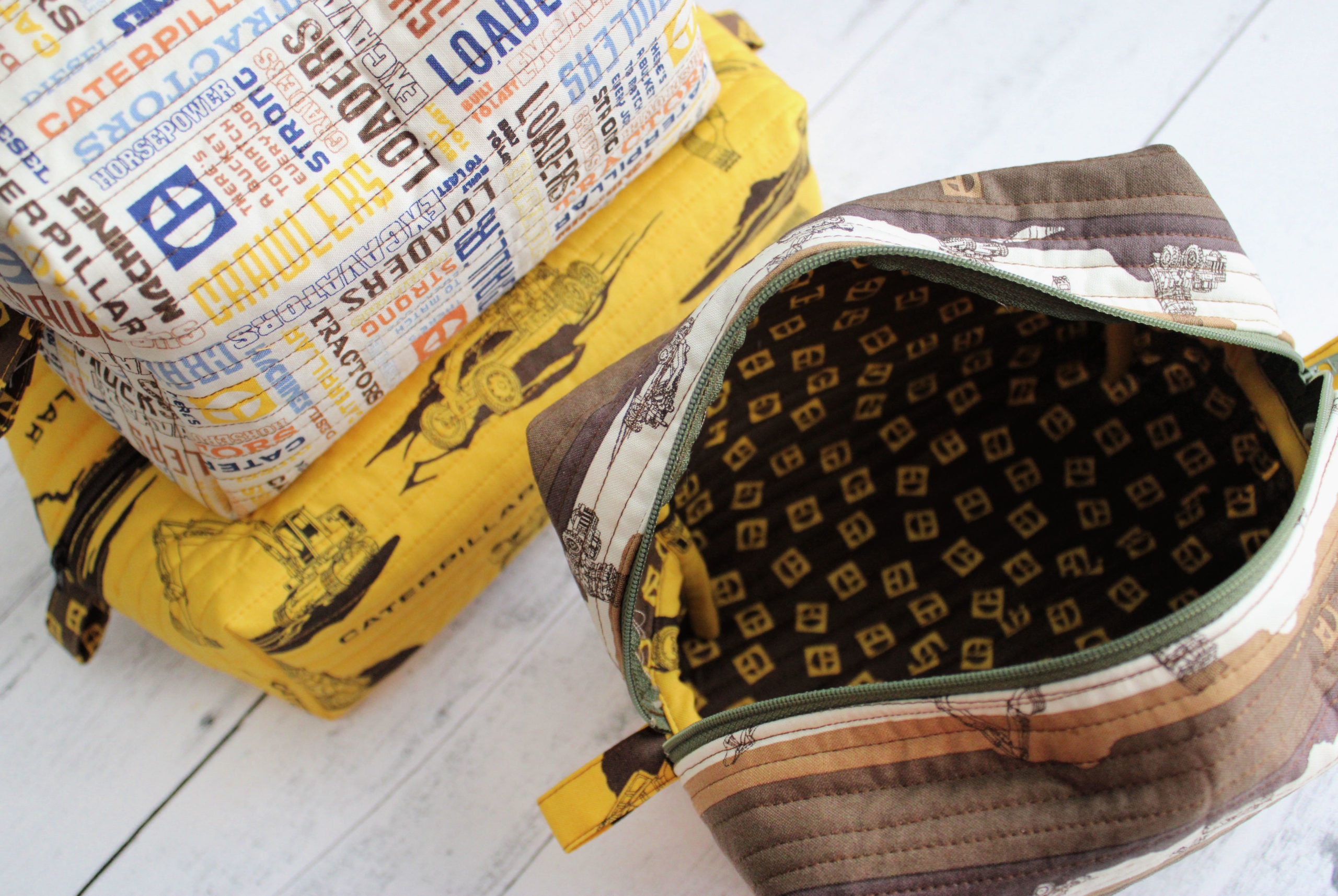Hello, friends! It’s Julia from Bayhill Studio. Today I’m sharing a tutorial for making these fun and very functional Quilted Dopp Kits featuring fabric from the Vintage Caterpillar® collection.

I love making these little bags because they are quick, easy, and make a great gift for anyone on my list. This Dopp Kit can be made in two sizes — a boxy version perfect for minimal counter space or bulky, and a shorter, longer version perfect for fitting into luggage.
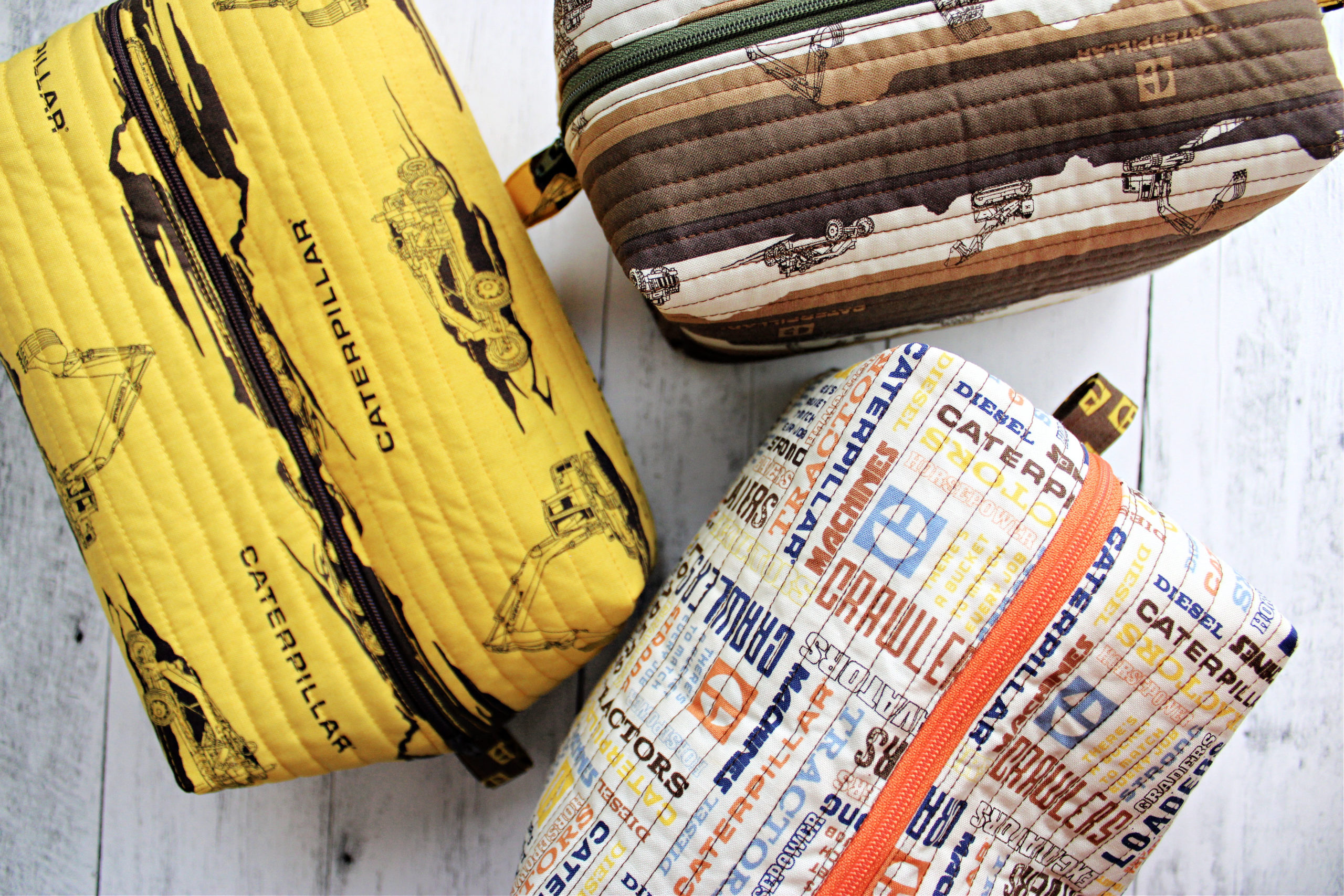
For young kids, these are a nice, personalized way to store and organize toy cars, doll clothes, and other small items. For older kids to adults, you can use these for travel, or for apartment and dorm living.
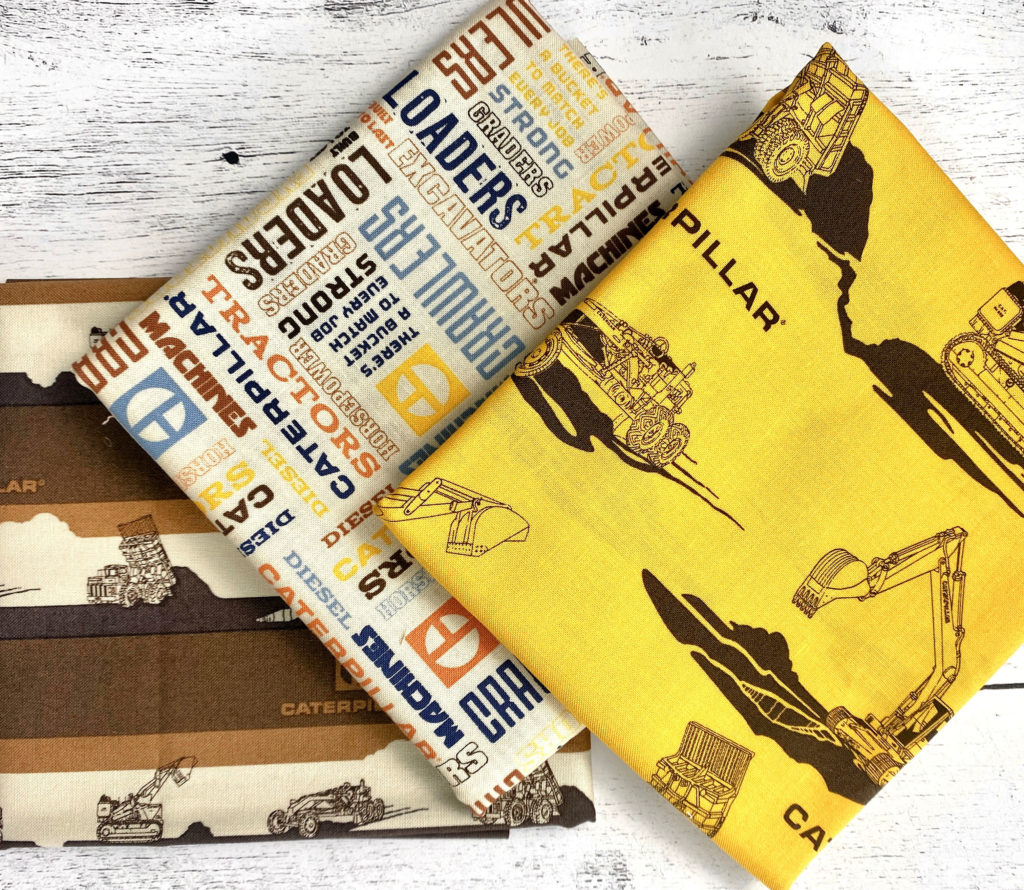
To make these bags, I used the Brown Stripe, Sand Text, and the Yellow Main Vintage Caterpillar® fabrics for the outside.
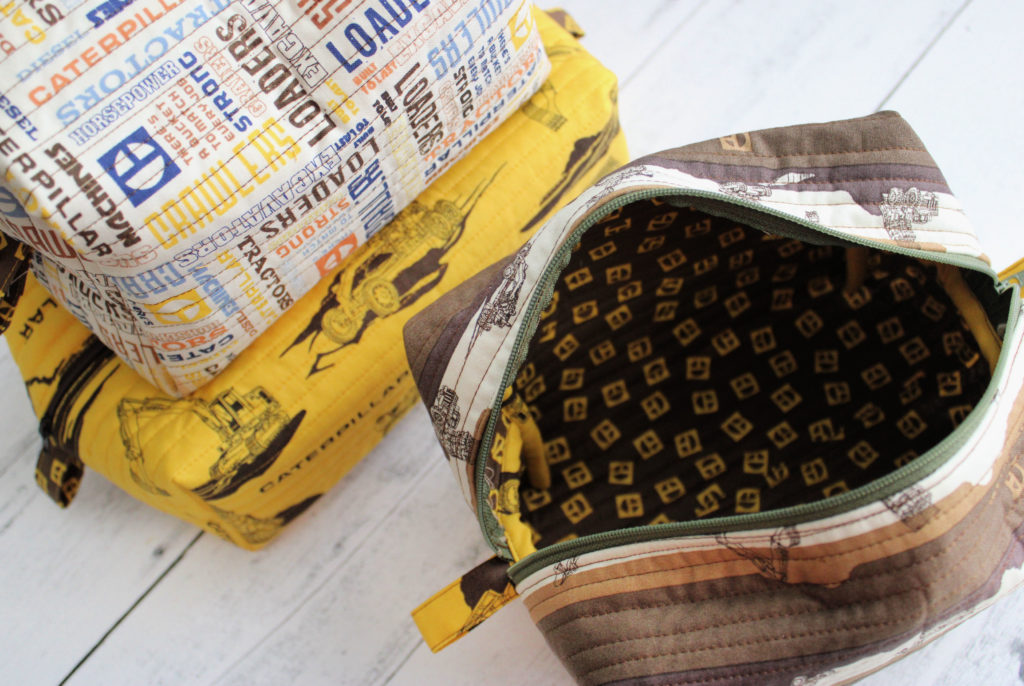
I used the Brown Tossed Logo for the inside of each of the bags.
To make one of these Dopp Kits, you will need:
(1) 14″ x 21″ outer fabric
(1) 14″ x 21″ lining
(1) 14″ x 21″ quilt batting or fusible fleece
(1) 2 1/2″ x 8″ side tabs
(2) 2 1/2″ x WOF (or various 2 1/2″ lengths of scrap fabric) inside binding
(1) 14″ or longer zipper
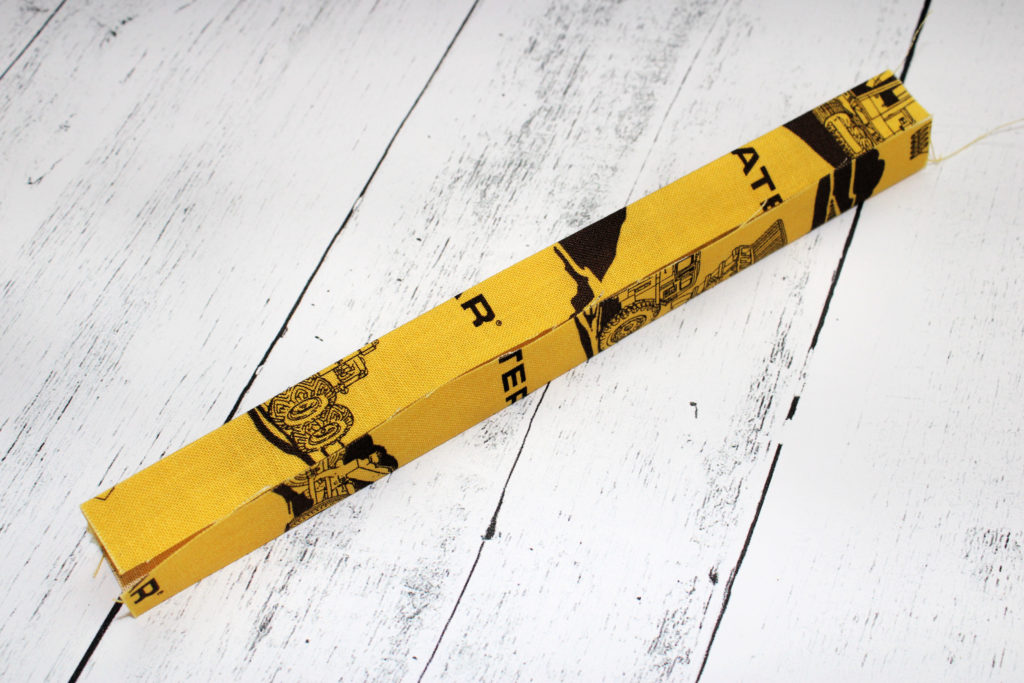
To start, let’s prep our tabs. Take the 2 1/2″ x 8″ strip of fabric and fold it in half lengthwise. Press. The press each of the sides in half towards the center and press.

Stitch along each side of the strip, about 1/8″ from edge.
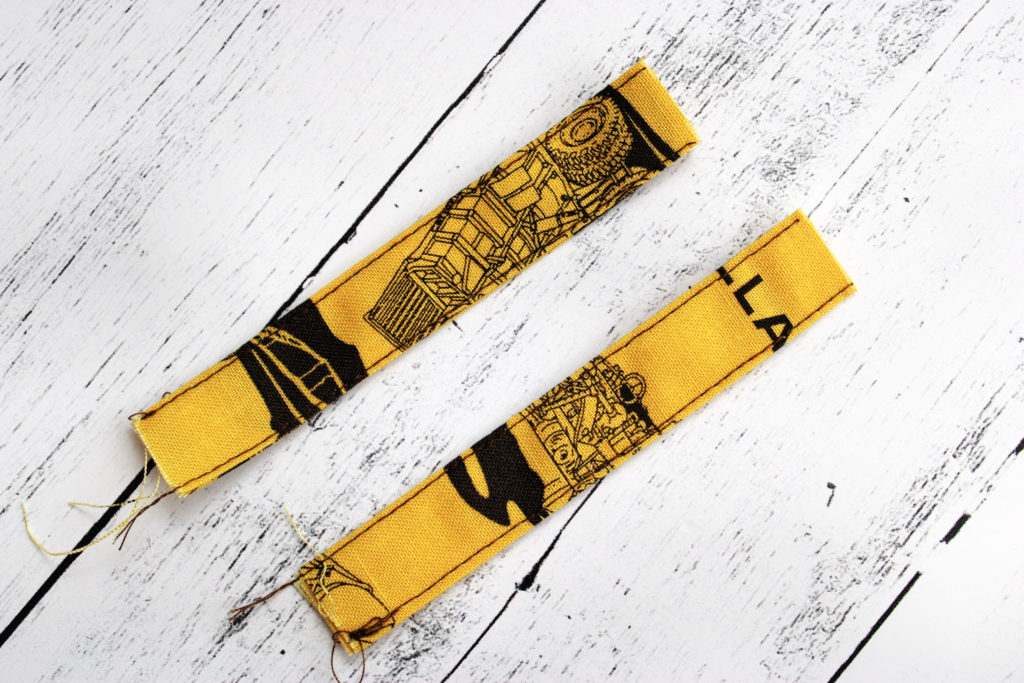
Cut the strip in half. Set aside for now.

Next, make a quilt sandwich with the lining fabric on the bottom + quilt batting + outer fabric on the top. You can use spray fabric adhesive on the fabric backs to help prevent the fabric from slipping around.
Quilt the fabric grouping anyway you like. I did straight line quilting for my bags. *Tip: if doing straight line quilting, it can be helpful to alternate the direction of your stitching with each row in order to prevent the fabric from slipping to one end.
Trim the rectangle to measure 13 1/2″ x 20 1/2″. (If you need to trim it slightly smaller in order to even out the sides, it isn’t a problem. It won’t affect the final outcome.)
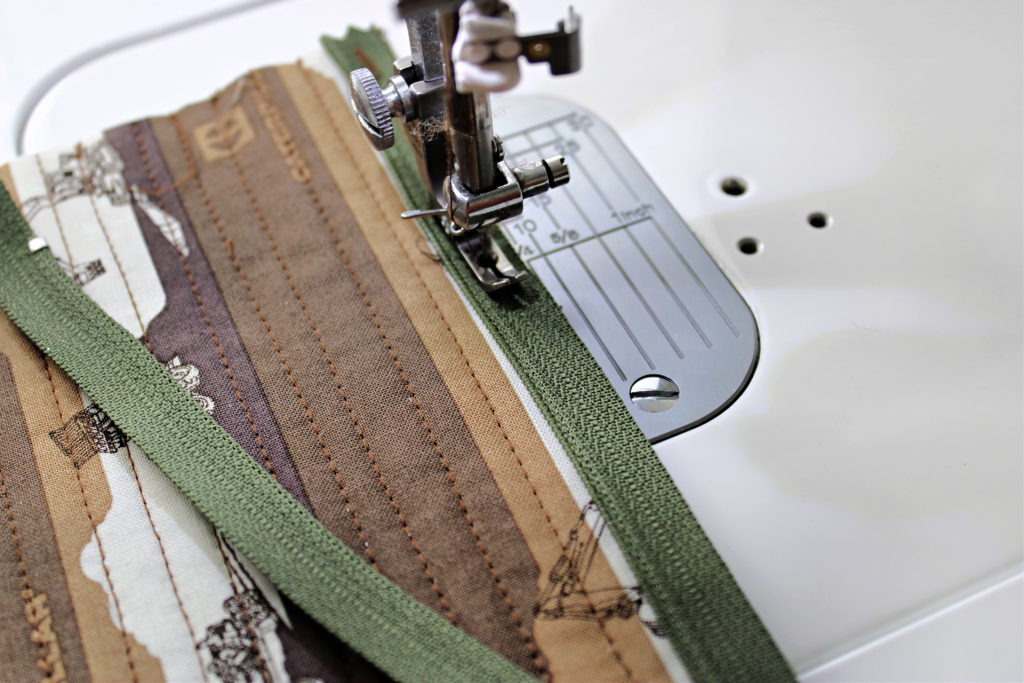
Add the zipper. Sewing the zipper face down to the short edge of the outer fabric. The zipper teeth are on the inside and the edge opposite the teeth is lined up with the raw edge of the fabric. Fold zipper so the zipper tape faces the lining fabric. Press. Top stitch.
Note: If you zipper is too long, simply shorten it by stitching back and forth across the zipper teeth at the point where you want the zipper to end. I did this stitch about 1/8″ before the end of the fabric. I then cut the excess zipper tape off to align with the end of the fabric.
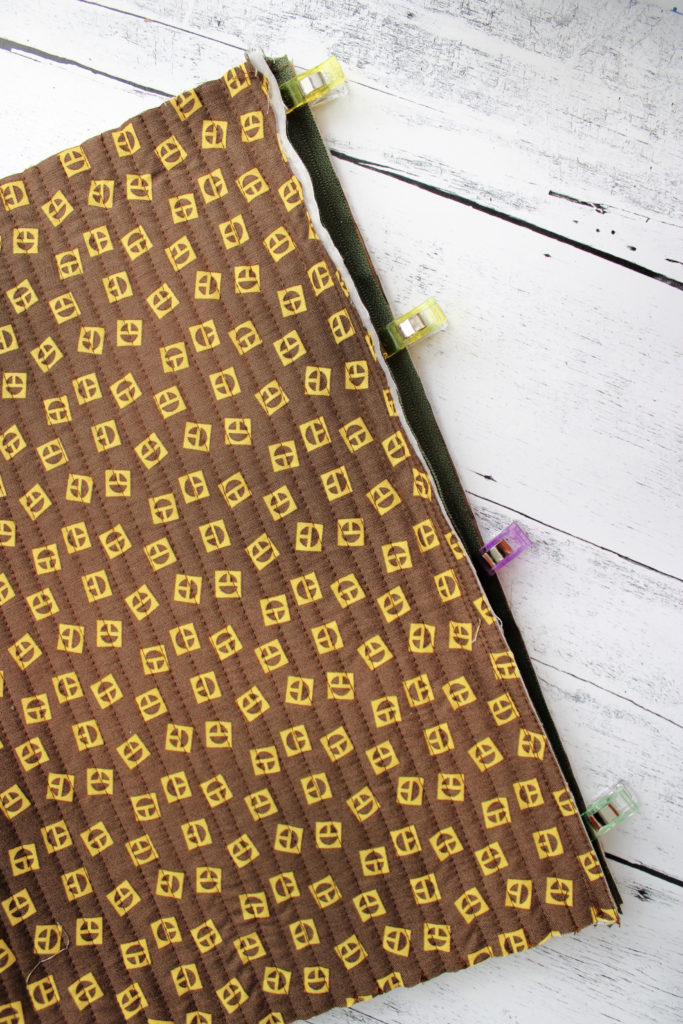
To attach the other zipper half, fold the quilted rectangle so the lining is on the outside, and line the zipper tape up to the right side edge. Pin or clip in place.
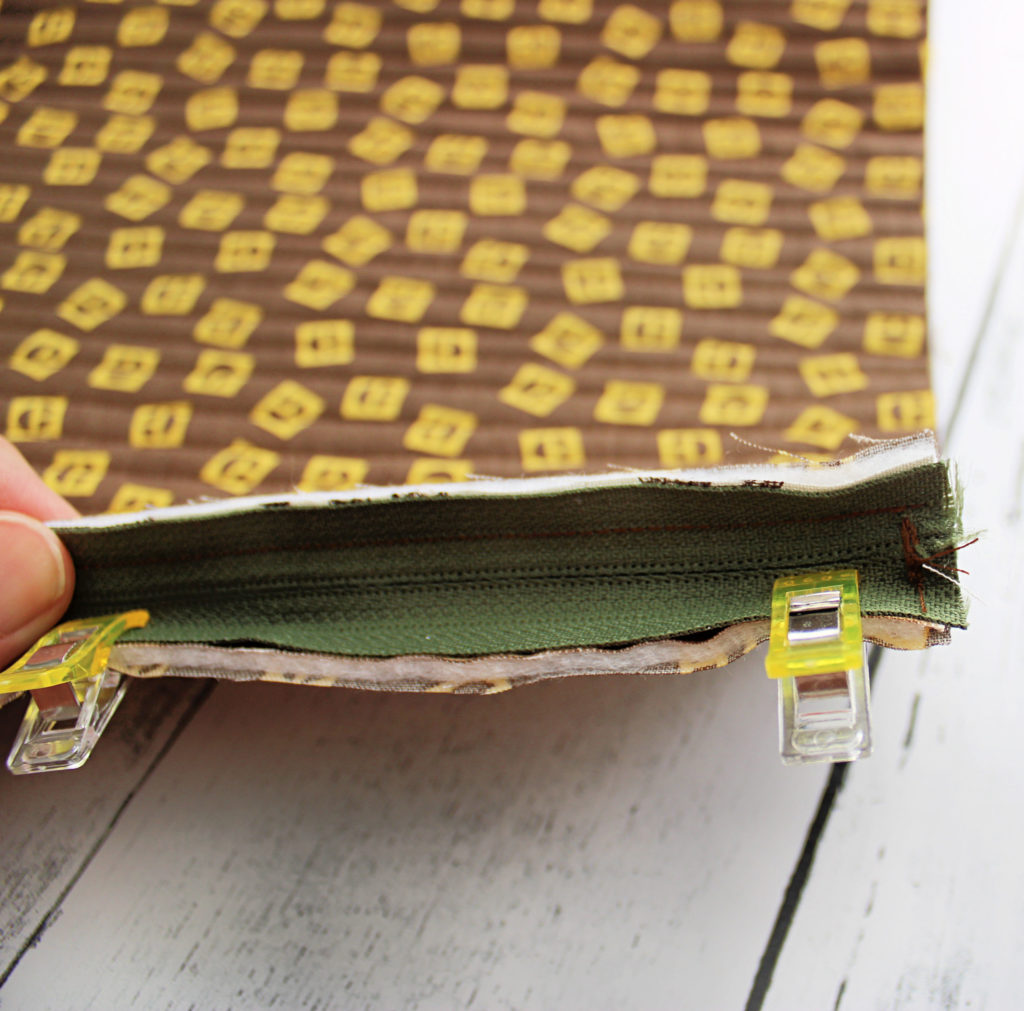
Here is what that looks like. Stitch zipper tape in place. Press open. Carefully topstitch. You will need to open the zipper to do this, and go very slowly when you reach the end of the zipper.
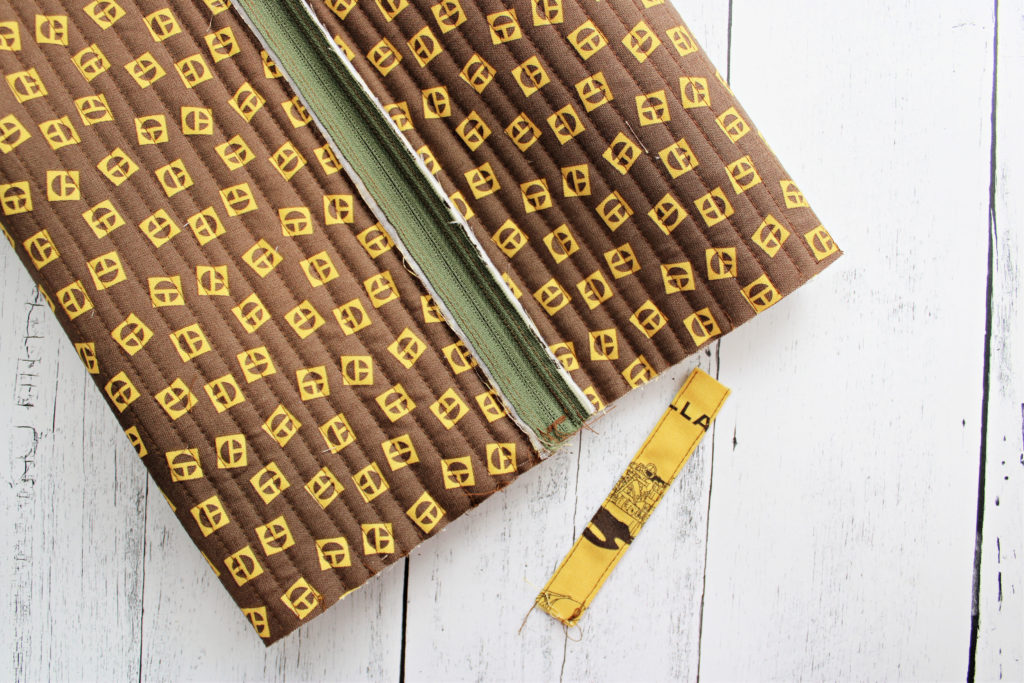
We now have a cylinder shape with the lining fabric on the outside.
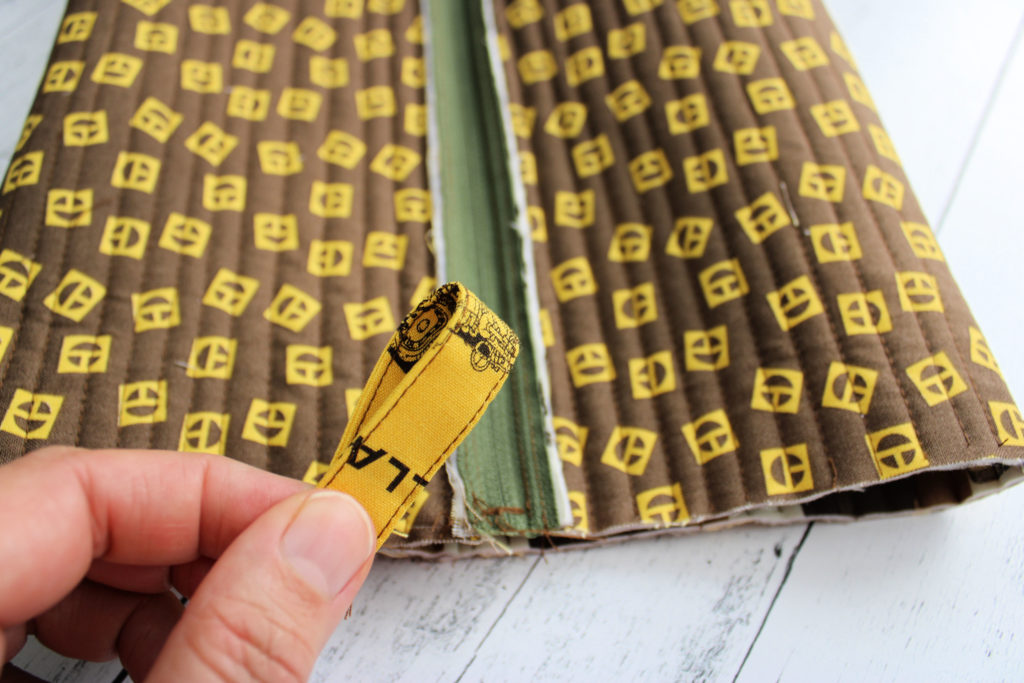
Fold the 4″ tab in half.
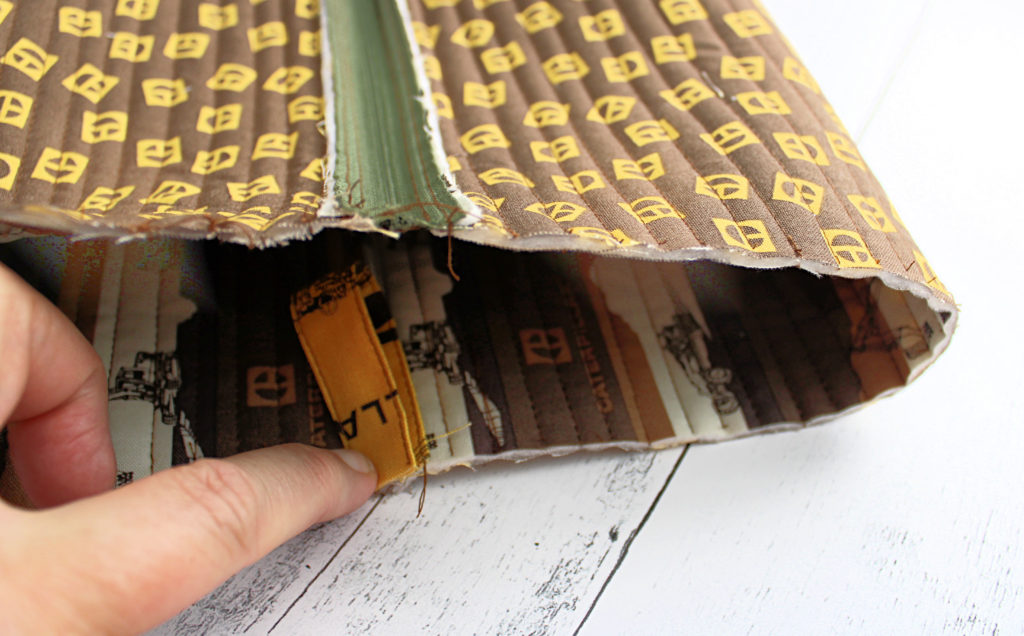
Place the tab on the inside so the loop is on the inside and the raw edges line up with the raw edges of the quilted fabric. The tab should line up with the center of the bottom fabric and with the zipper.
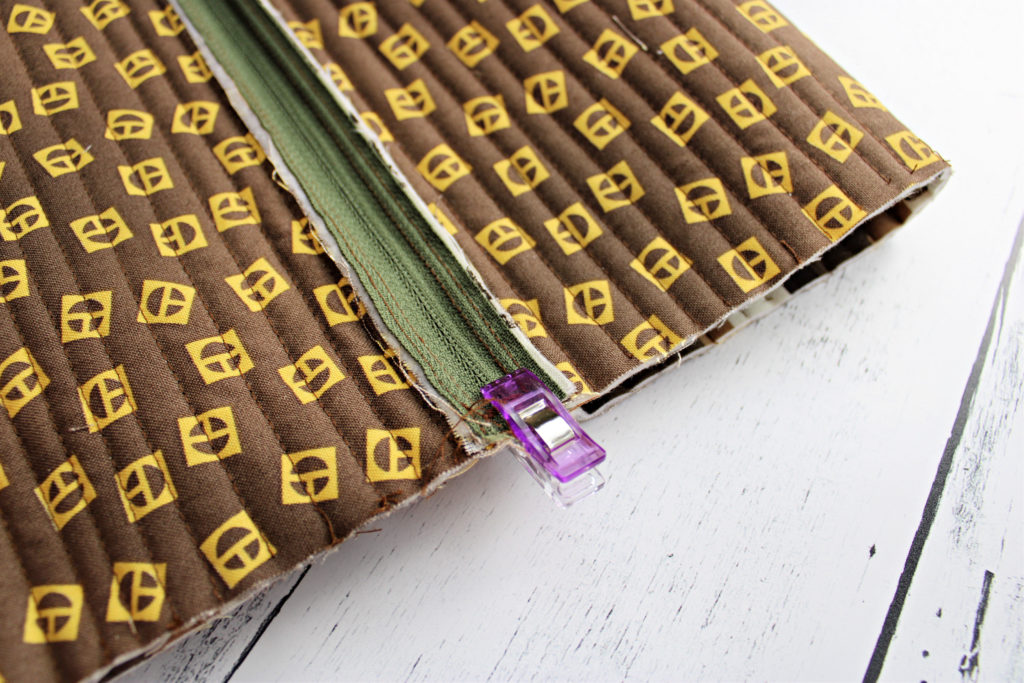
Pin or clip in place. The zipper, the tab, and the bottom center are all aligned. Stitch along raw edges, going slowly and carefully over the zipper area.
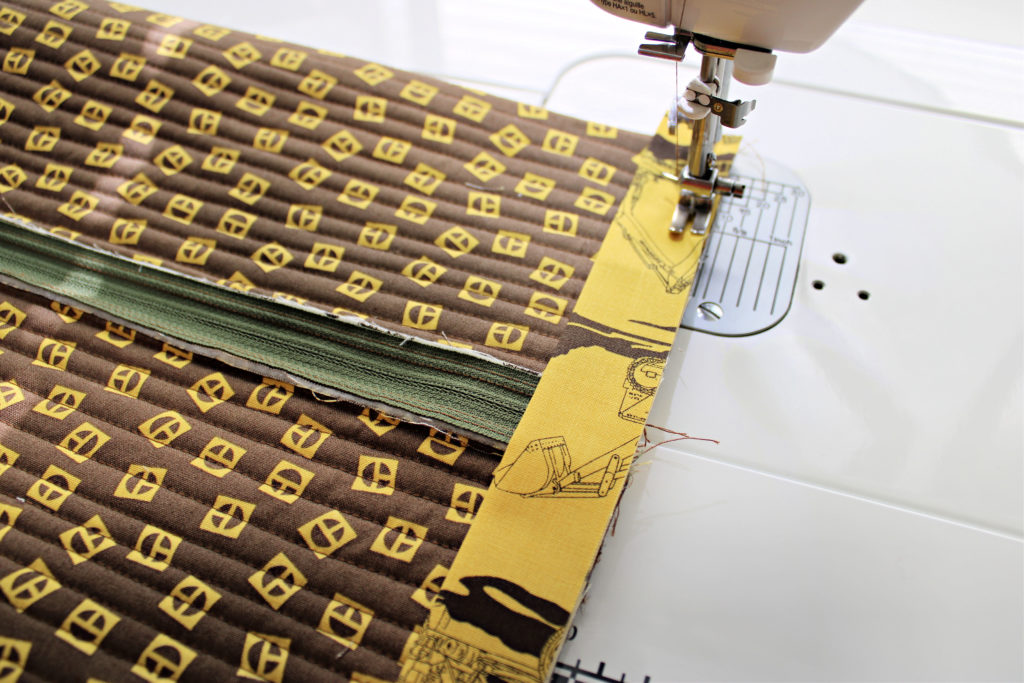
Adding binding is totally optional. It covers the raw edges on the inside of the bag, and is there purely for aesthetic purposes.
To add the binding, press a 2 1/4″ strip of fabric in half. Stitch the folded strip so the raw edges of the strip align with the raw edges from the previous step.
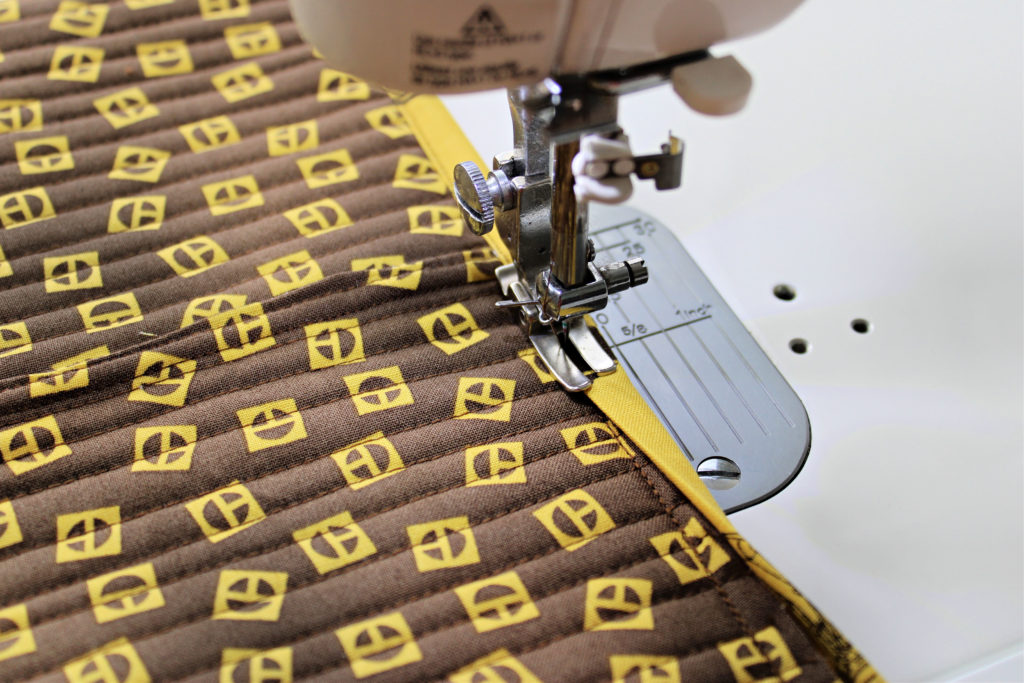
Now fold the binding over to the other side and stitch close to the edge of the fold.
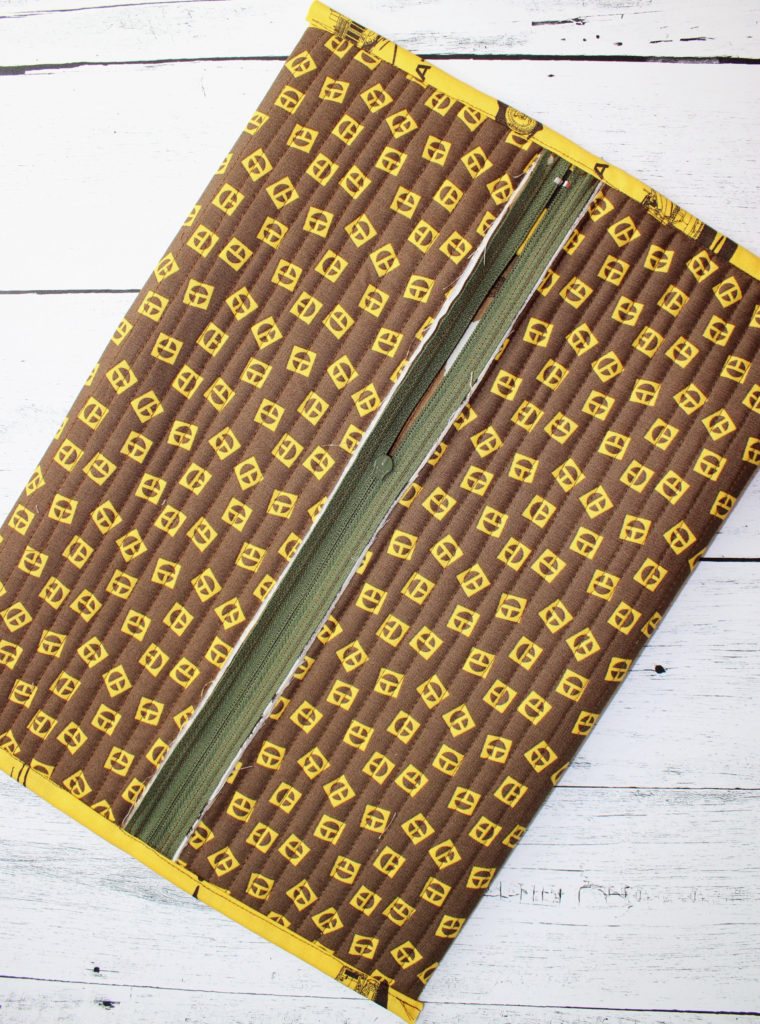
Repeat on the other side. Your bag will now look like this.
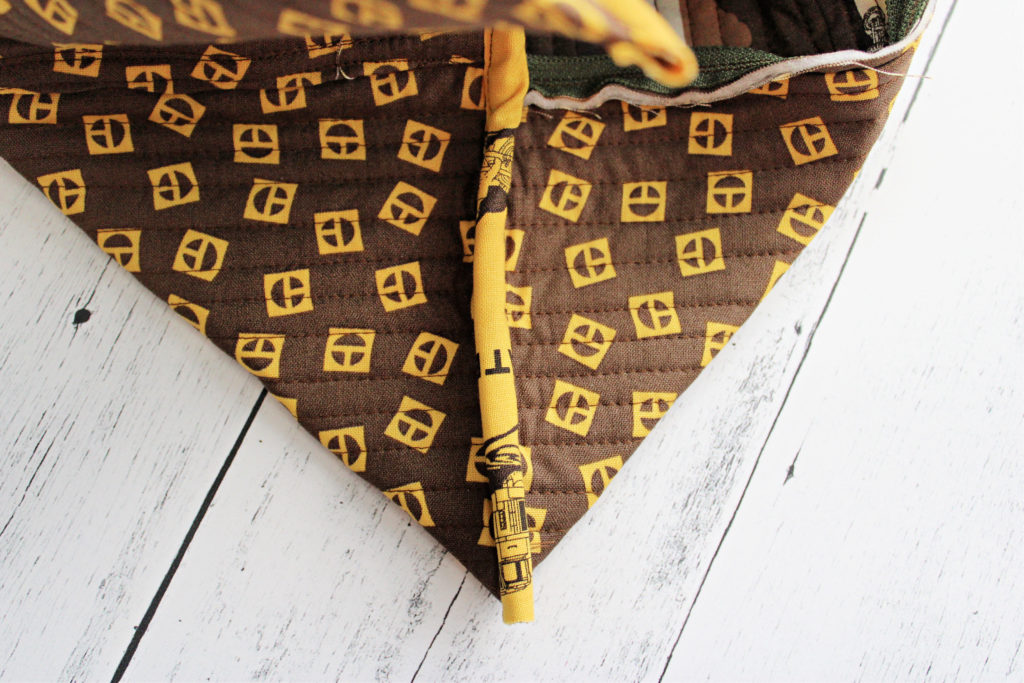
To make the boxed corners, open the side so it forms a triangle, and the binding is at the center of the triangle.

This step will determine if you want 3 1/2″ x 9″ version, or the boxier 5 1/2″ x 7″ version. If you want the 3 1/2″ x 9″ version, use a ruler to measure 1 3/4″ from the point of the triangle, and draw a line across.
If you want the boxy 5 1/2″ x 7″ version, use your ruler to measure 2 1/2″ from the point of the triangle and draw a line across.
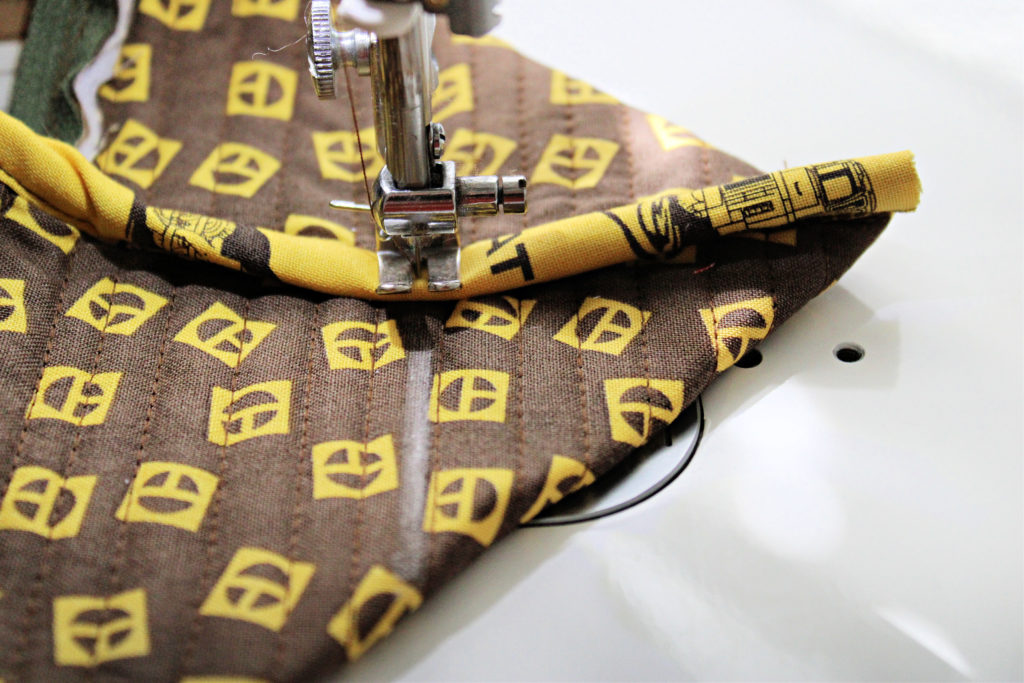
Stitch along the line, going slowly over the binding.
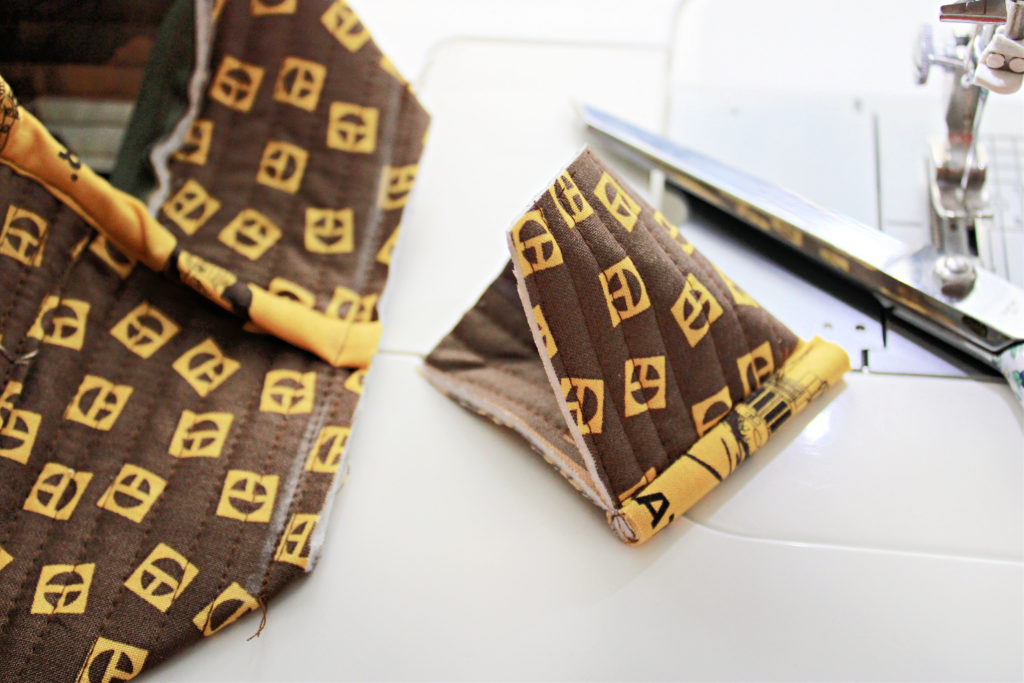
Cut off the excess fabric. Repeat for each of the three remaining corners.
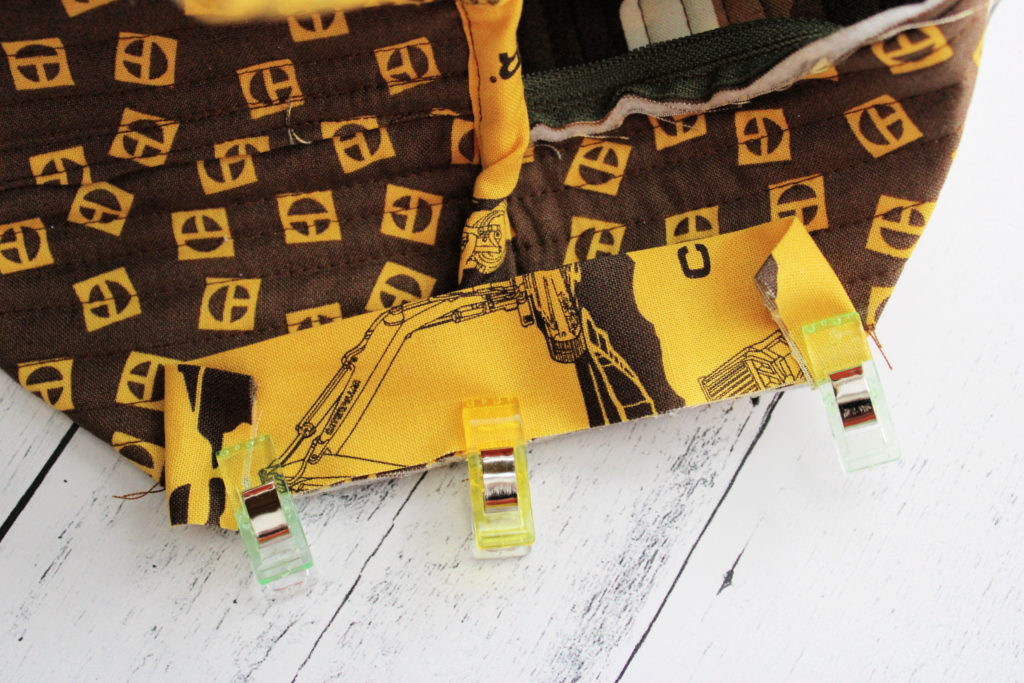
Add binding to the boxed corners using what it left of your folded 2 1/4″ strips of fabric. I like to fold my raw edges in and stitch right over the fold, but you can add the binding in whatever method works for you. Because the binding is on the inside, imperfections will hardly be noticed.
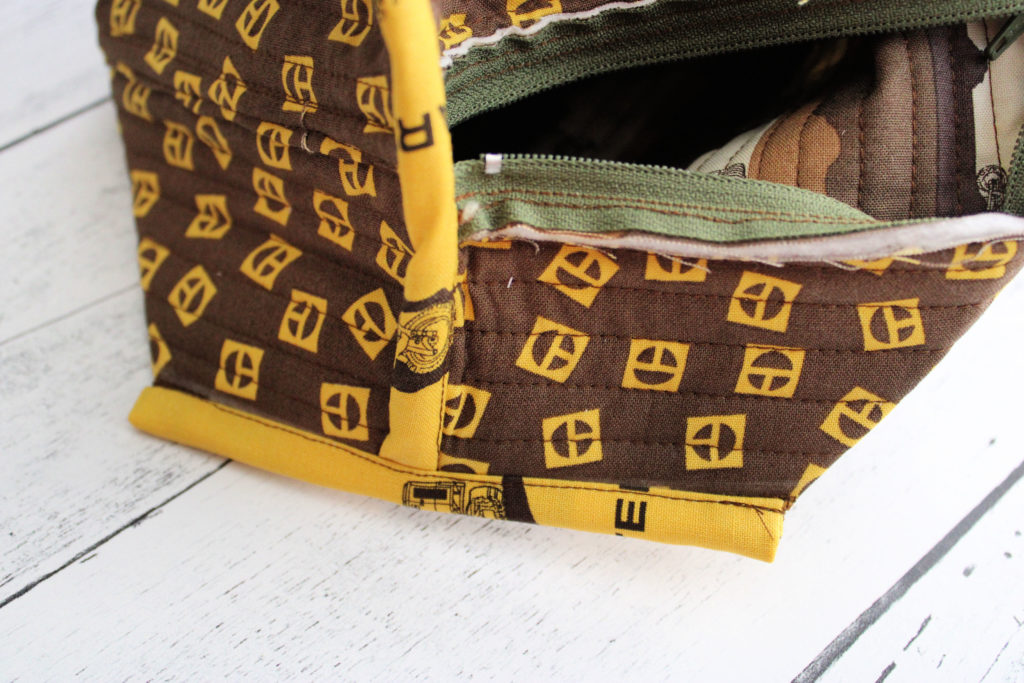
Fold the binding over and stitch close to the folded edge.
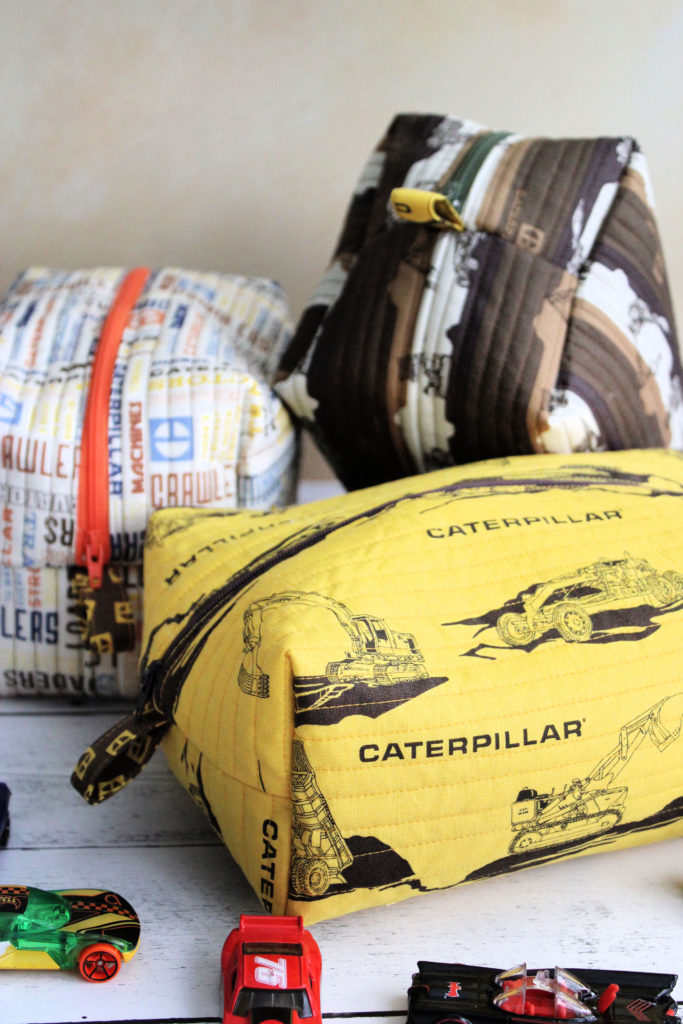
Now turn the bag right side out and you are finished!
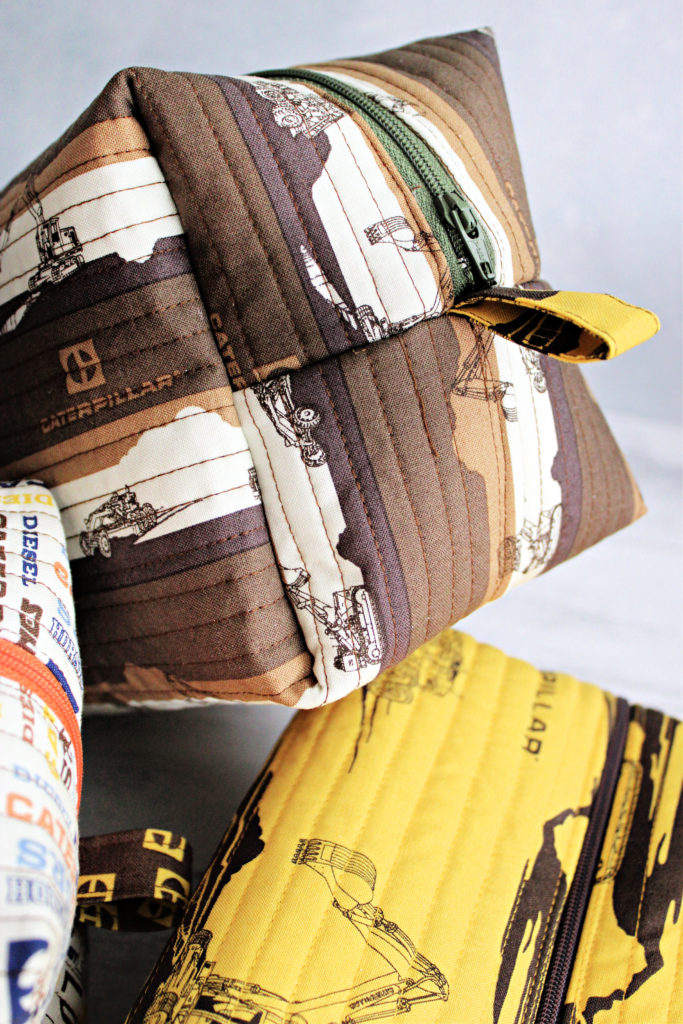
I love the tabs on these dop kits — they make them easy to pick up, but they also give an opportunity to add a fun, contrasting fabric.
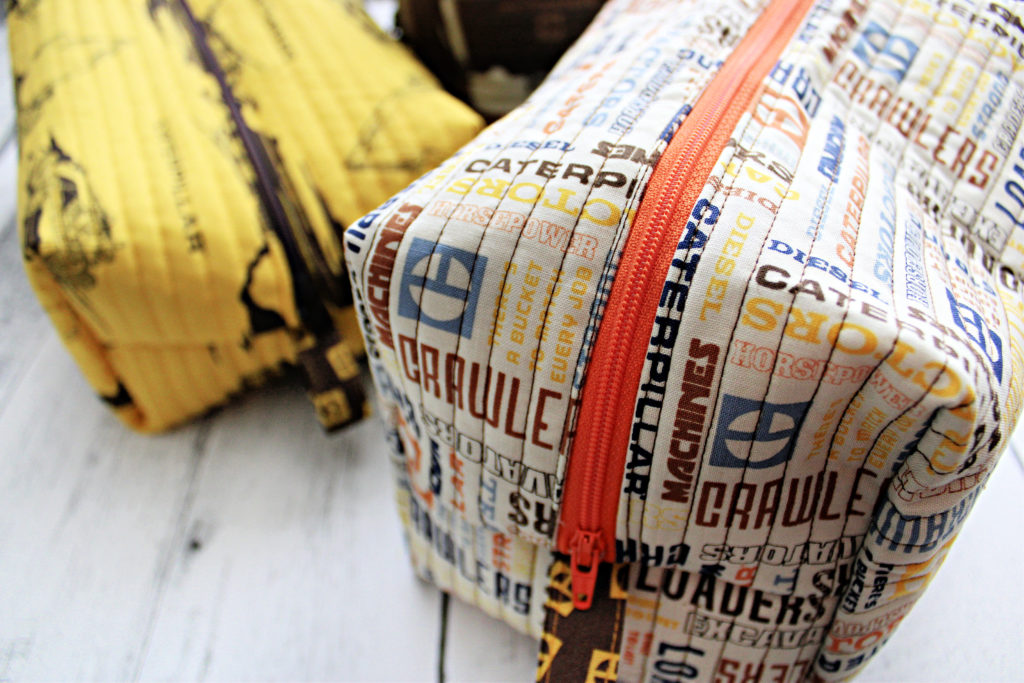
You can also add a pop of interest with a bright, coordinating zipper.

The 3 1/2″ x 9″ Dopp Kit is the perfect size for fitting into a suitcase.
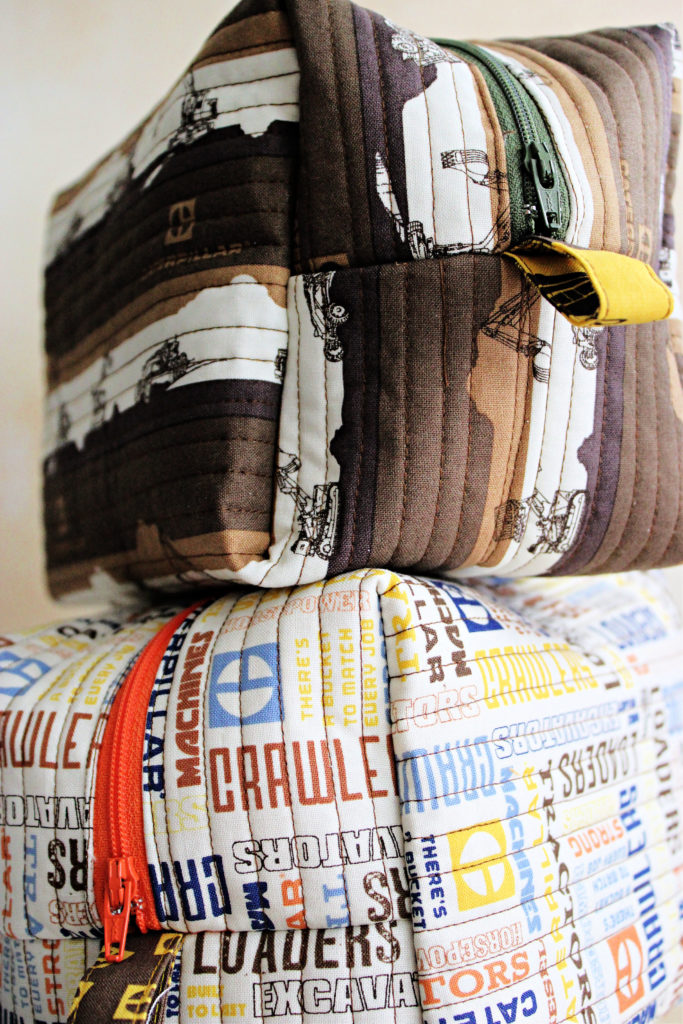
The 5 1/2″ x 7″ Dopp kit is more cube shaped, and therefore takes up less space. This would be a great option for dorm life or for storing chunky toys.
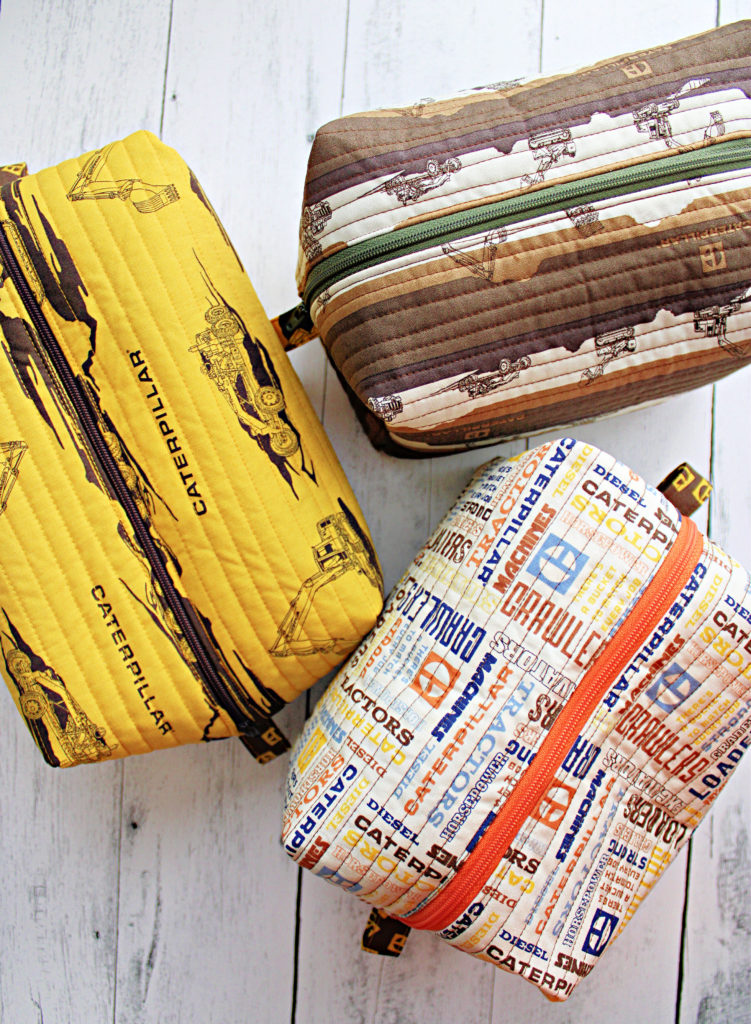
Thanks for stopping by! The Vintage Caterpillar® collection is available now! I hope you enjoyed this tutorial. Be sure to follow me on Instagram and subscribe to my YouTube Channel for more creative content and project ideas, and most of all, have a blessed day.

